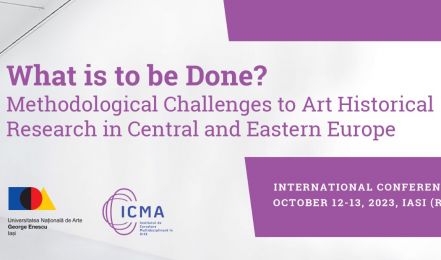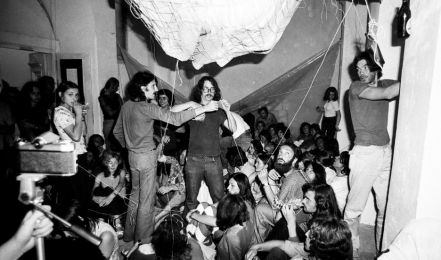‘research’
Mit, miért, hogyan? A művészettörténeti kutatás lehetőségei II.
Open call. The Central European Research Institute for the History of Art (KEMKI) is organising a workshop for art history and art theory students. The workshop aims to introduce young professionals to the methodology of art history and art theory research and the practical challenges of research-based work. Following the participants will jointly create an imaginary project (exhibition, event, research) based on their research …
“Aktív - archívum - kutatás” műhelymunkában
On 26 October 2023, archive research workshops will be launched at the Artpool Art Research Center. The group of seven people (university students and young researchers from different professional backgrounds) will start their work under the leadership of Andrea Pócsik, cultural researcher. The idea of the "laboratory" is based on the unique feature of Artpool that participants can develop their own research questions in …
What is to be Done? Methodological Challenges to Art Historical Research in Central and Eastern Europe
International Conference Organized by: ICMA – The Institute for Multidisciplinary Research in the Arts, UNAGE, Iasi, Romania. In collaboration with: Academy of Fine Arts, Prague, KEMKI-Central European Research Institute for Art History, Budapest and the University of Lodz. CONFERENCE PROGRAM Thursday, October 12 9.45 – 10.00 – Introduction 10.00 – 12.00 Panel 1: Revisiting socialist art: state-supported institutions, exhibitions, and cultural …
Németh Hajnal: Szabadságcsapda - performatív installáció
… had never found common ground before or after? In connecting to the theme, the Artpool Art Research Centre remembered the Balatonboglár scene of 50 years ago by organising its own exhibition, entitled Fundamental Otherness (curated by György Galántai). You can read more about the exhibition here . A further development of the exhibition event commemorating the Chapel Studio and highlighting the Galántai and Artpool projects that arose from it was also presented at the Valley of …
Megrendelt emlékezet: magyar kiállítások Auschwitzban 1960/1965
… Blinken OSA Archivum, Galeria Centralis, CEU Jewish Studies Program partners: Central European Research Institute for Art History (KEMKI), CEU Press, Tom Lantos Institute




